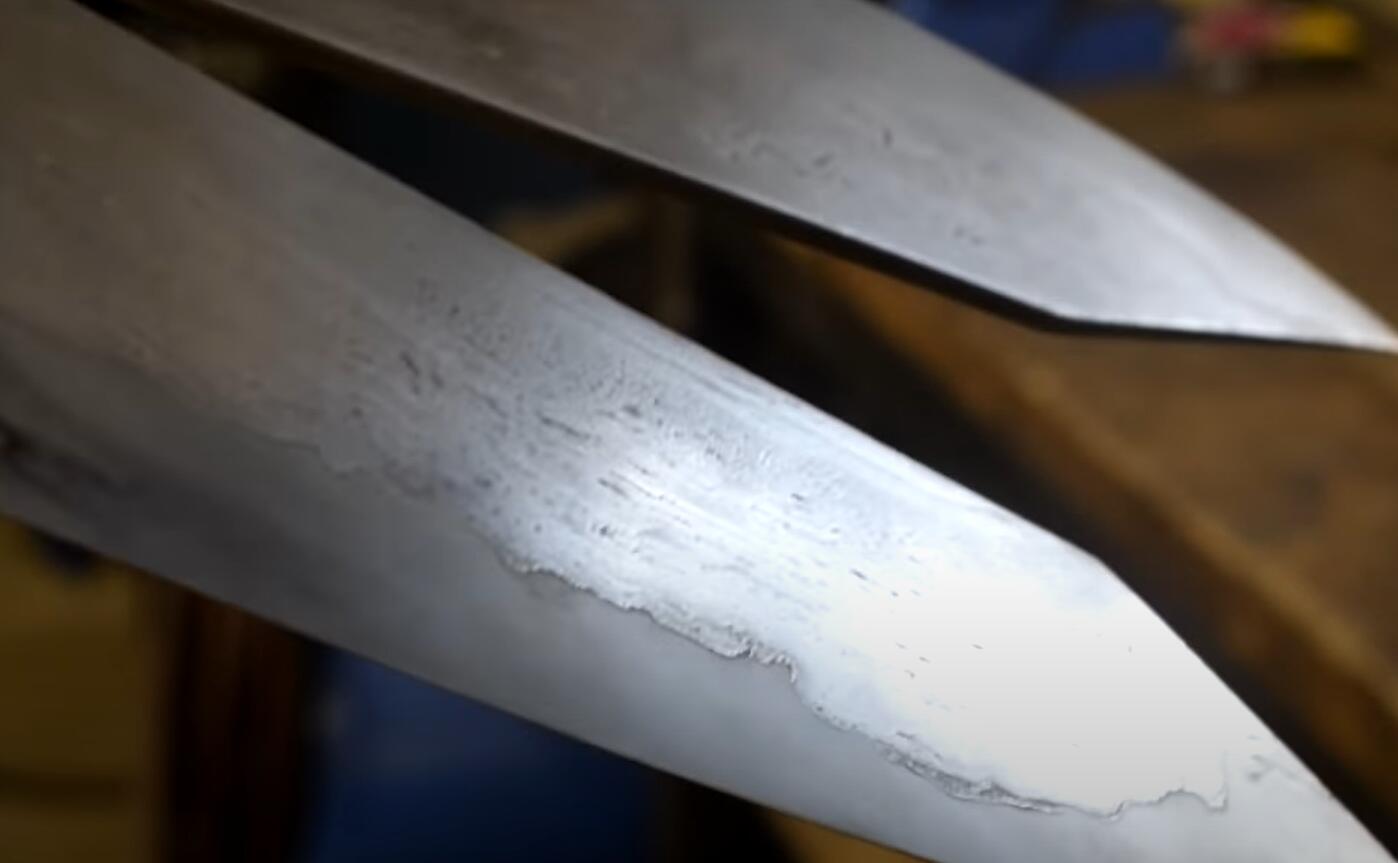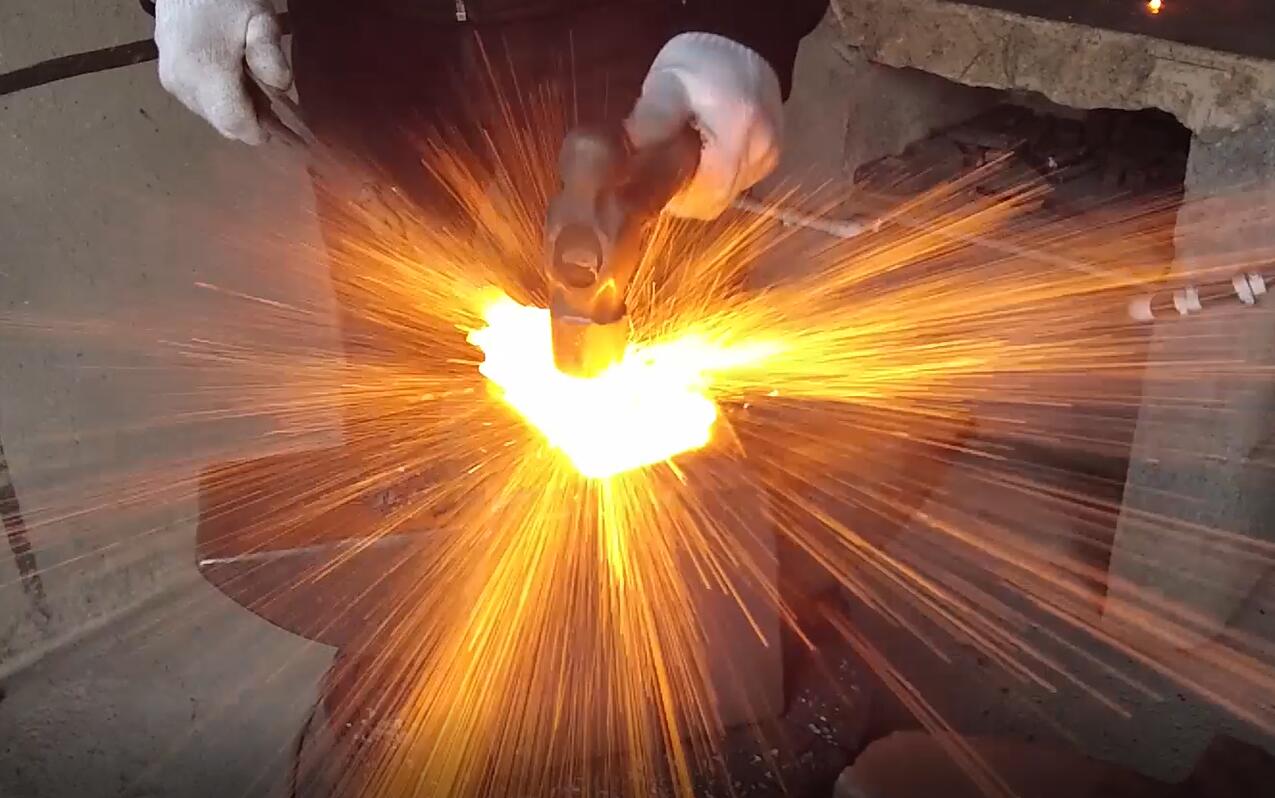San mai is an ancient knife forging technique found in Japan. The term San Mai, meaning three things, alongwith its root term honsanmai, have long been used to refer to a unique construction method incorporating different layers of steel.
This is a distinctive method of steel construction that has been around since 1300 A.D.The word San Mai is literally the most accurate description of its name since it generally encompasses different layers of steel-both hard and mild.
While mono steel knives require you to make a compromise between durability and sharpness, you don’t need to make this trade-off with San Mai. The unique steel relationship alongside the distinctive forging technique that gives birth to the great San Mai grants it exceptional qualities over others.
Read on to discover all about the legendary popularity of the San Mai.
Table of contents
What is San Mai steel?
San Mai steel is a traditional Japanese technique of blade-making that encompasses three different layers of steel in its construction. Blades made from San Mai steel have a center core made out of hard steel while the two outer layers that encase the core are made with softer and pliable steel.
Knives made out of San Mai steel come from a family of laminated steel knives that take on hard steel at their core and fold this steel into layers of softer steel, allowing resistance to chipping and cracking of the brittle core.
This perfect combo of hard and soft steel allows the best of both worlds- the edge of the hard steel and the longevity granted by the more delicate steel layers.
Handpicked for you
True cutting power in the palm of your hand
Origin
“San Mai” means “three flat things” in Japanese. Since around 1300 A.D., the term has been used to describe the construction of steel using three different layers. Japanese bladesmiths have long used this technique to forge their katana for granting both flexibility and sharpness to their blades.
The term San Mai, is used both to refer to knives, blades or swords made with this steel as well as the technique used to produce such blades.
San Mai steel knife advantages
There are a number of advantages of the San Mai steel knives listed below:
- San Mai knives are best for cutting and slicing tasks due to the sheer sharp edge that the central hardcore grants them.
- The softer steels surrounding the core make for excellent shock resistors while preventing the hard metal at the center from cracking.
- The chances of breaking the tip by a fall for a soft-clad steel knife such as San Mai are comparatively slimmer than other knives.
- Finally, the technique of the San Mai construction is an advantage in itself. It provides an outstanding cutting edge while providing an exterior that resists corrosion.
San Mai steel vs. mono steels

You might be wondering how San Mai steel is better or worse than mono steels such as regular carbon steel or stainless steel. The truth is, the answer isn’t that simple. Here are the differences for you to be the judge:
Technique
The first huge difference is the technique used in making the two steels. Mono steel knives such as the one shown above on the right encompass entire blades made from a single piece of steel. On the other hand, knives made from the San Mai technique such as the one shown on the left, encompass core steel clad by outer layers of softer steel.
Maintenance
San Mai knives are easier to maintain as compared to high carbon steel, provided that their outer layers have higher amounts of chromium in them. Easier maintenance of San Mai knives is because their chromium content protects the steel from rusting. It’ll also form a barrier to protect the rest of the metal from oxidation.
On the other hand, stainless steel is less prone to rusting, even better than most San Mai knives, and requires less maintenance.
Hardness vs. toughness trade-off
Knives must be hard enough to hold their edge when handling abuse. On the other hand, they must also be tough enough to resist breakage under impact. Mono steel knives often have to make a trade-off between the two, as higher amounts of carbon content make harder knives but are brittle.
On the other hand, lower carbon content is flexible but soft and ineffective to cut. Laminated knives do not have to make such a compromise. This is because they incorporate both hard and soft steel in their makeup and capitalize on the benefits of both types of steels. The hard core at the center allows for a blade that is best for slicing and cutting, while the outer layers act as shock resistors to keep the brittle blade from breaking.
How to make San Mai steel?

The San Mai steel is a genius composition of hard and soft steel to realize the combined benefits of the two. Let’s look at the forging process that produces the great San Mai steel:
Forging the San Mai steel is a delicate procedure that requires everything to be inch-perfect for achieving the perfect knife. Metalsmiths begin by picking out steel for the core and outer layers based on carbon density. The higher carbon content in steel is incorporated into the core.
On the other hand, the lower carbon content makes two equal slabs of steel that are used to sandwich the hard core. These slabs are then forged which helps bind them together. Forging that is done correctly will allow the central steel to create a sharp edge, whereas the outer layers will act as defensive coats that resist damage upon breaking and impact.
Heat treatment
The best San Mai steel knives require a triple normalization cycle at approximately 80℃ followed by an instant air-cool. Next, austenitizing must be done at the same temperature of 80℃ and maintained for roughly five minutes.
After hardening, the tempering takes place, which must be performed at 20℃ for kitchen knives to achieve the best results.
Etching
Etching is an optional procedure that involves removing some metal in order to create designs or graphics on the surface. It involves removing decarburized material off the blade followed by abrading the blade. The etching process is then completed in ⅓ strength ferric chloride till desired depth is achieved.
A San Mai knife that will render the best of both worlds is created when the core is made from high carbon while the knife jacket is made from stainless steel. The high carbon core will allow optimal cutting and slicing, while stainless steel will protect it from rust.
Other forging techniques
Besides the San Mai technique of steelmaking, there are a number of other Japanese forging techniques discussed below:
Kobuse
The Kobuse incorporates two types of steel in its construction. Moreover, this construction is the opposite of what you see in the San Mai technique. While the San Mai incorporates softer steel in the outer layers whilst protecting the harder steel core, the Kobuse has soft steel at the core and hard steel outside.
In Japanese swords, hagane steel was used for the edge of the sword while shingane steel was incorporated into its core.
Honsanmai
Honsanmai is similar to Kobuse in that it incorporates softer steel in the middle while hard steel is used on the outside. The difference arises due to the addition of an extra layer that coats the hard steel. This is generally the kawagane steel, a Japanese steel that has an exceptional level of carbon content.
Maru
Maru, or Moku, is a Japanese forging technique that encompasses a single steel type. This steel type is generally high-carbon steel. Most Japanese knives are typically Maru knives since they are made out of a single type of steel.
Besides the above Japanese forging techniques, there are a number of other forging techniques used by bladesmiths to make knives and blades. These forging techniques grant differing attributes to the steel that is birthed.
FAQs
Why do San Mai knives have a contrast between the steels?
You might have observed a dramatic contrast between the steels in San Mai knives. This is because the knife core is usually high carbon, which develops patina and darkens over time.
Is San Mai steel a good option?
In many ways, San Mai steel is similar to Damascus steel. Despite being forged and cut down into blades, they incorporate remarkable cutting power, as well as, exceptional levels of durability.
Should you invest in San Mai knives?
San Mai knives are popular cutlery tools used even today. This is because they offer exceptional sharpness and varying levels of hardness too. The hard core makes for a sharp edge, while the outer layers act as shields to the hard core. These qualities make them stand out and allow them to last longer. Therefore, they are definitely worth the investment.
Final word
San Mai steel renders top-quality knives that not only have strong blades but can also tolerate heavy use. Therefore, you must consider adding a knife made from San Mai technique to your kitchen arsenal and reap the various benefits that come alongside!












